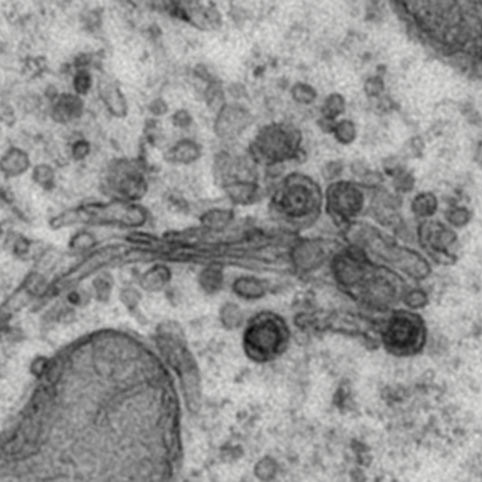-
About
- Health
-
Patient Care
I Want To...
-
Research
I Want To...
Find Research Faculty
Enter the last name, specialty or keyword for your search below.
-
School of Medicine
I Want to...
View All Publications





Thin section electron micrograph of a cell infected with the coronavirus infectious bronchitis virus showing virus particles assembling in a Golgi region. These virus particles will eventually be exported by vesicles to the cell surface where they are released. --Credit: Carolyn Machamer, Johns Hopkins Medicine
The Weird Way Coronaviruses Assemble Their Offspring
Most coronaviruses invade cells much like other viruses, such as influenza, which merges its envelopes with the surface of unsuspecting cells to release genomes into the cell. Once inside, the viral genome is replicated and forms an army of new viruses. The newly formed influenza viruses assemble and bud from the cell surface, ready to invade other cells. However, coronaviruses take a different route of assembly and escape from their host cell. They use the pancakelike structure in cells, called the Golgi complex — a kind of post office for the cell that sorts and processes proteins and spits them out of the cell after enclosing the proteins in a compartment called a vesicle. Cell biologist Carolyn Machamer, Ph.D., has been studying how coronaviruses assemble in the Golgi body and then stow away in vesicles to be shipped outside of the cell.
Read More
A Historical Guide to Pandemic Responses
The first in a series of short essays act as “signposts” to highlight historical research on prior responses to rapidly spreading disease among populations. Exploring the world’s previous experience with epidemics and pandemics, these posts aim to help a general audience learn how past responses offer enduring lessons for the future.
Questions, Comments or Story Suggestions?
Please contact Vanessa Wasta, Editor, at wasta@jhmi.edu.



